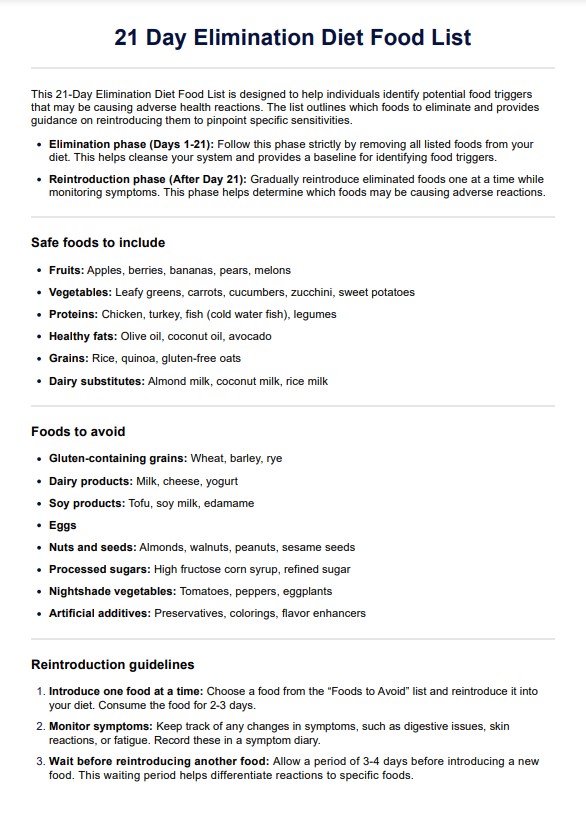21-Day Elimination Diet Food Lists help identify food sensitivities by systematically eliminating and reintroducing foods and observing for any adverse reactions.

21 Day Elimination Diet Food List
Discover the ideal 21 Day Elimination Diet Food List. Download our Free PDF guide to identify food sensitivities and improve your health.
Use Template
21 Day Elimination Diet Food List Template
Commonly asked questions
21-Day Elimination Diet Food Lists are used by registered dietitians when individuals experience unexplained allergies, digestive issues, or other symptoms that may be food-related.
21 Day Elimination Diet Food Lists are used by eliminating certain foods for 21 days and then gradually reintroducing them while monitoring for symptoms.
EHR and practice management software
Get started for free
*No credit card required
Free
$0/usd
Unlimited clients
Telehealth
1GB of storage
Client portal text
Automated billing and online payments











